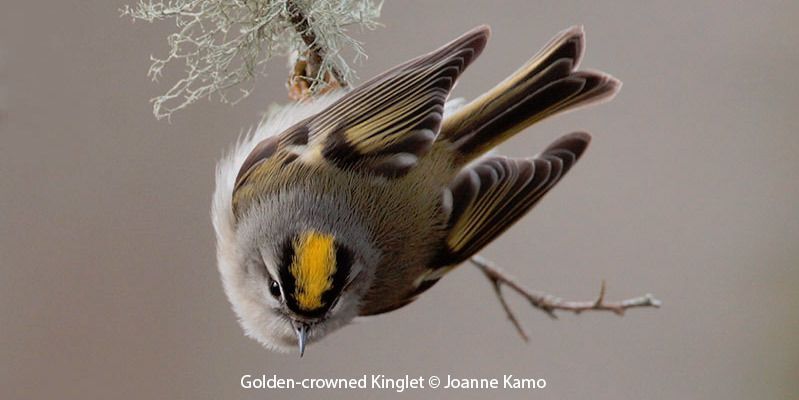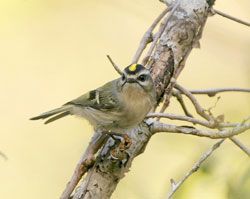
© Greg Lavaty
Golden-crowned Kinglet
Regulus satrapa
Family: (Regulidae) Kinglets
Preferred Habitat: Woodlands.
Seasonal Occurrence: Uncommon November through March.
Profile by Will McDaniel: The Golden-crowned Kinglet is a very small songbird endemic to North America. At 3 to 4 inches in length, it is arguably the shortest songbird on the continent. Its rounded body is olive-colored above and pale below, with white wing bars and white eye rings. Adult males have black facial markings and a black cap with a titular yellow and orange crown, which they flare dramatically when confronting rivals or defending their territory. Their call is a high-pitched note repeated several times.
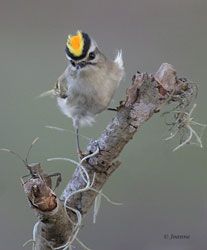
© Joanne Kamo
After breeding in the conifer forests of Canada, Golden-crowned Kinglets winter throughout the Continental United States from Mexico to the Great Lakes, though year round populations are present in New England and the Rocky Mountains. They are attracted to conifers, but will also forage in deciduous woodlands throughout its wintering habitat. These birds are active foragers, hopping between tree trunks and hanging upside down from branches in their search for insects and spiders. They avoid open spaces and tend to remain close to cover, sometimes making them difficult to observe. Birders hoping to sight this bird should search in the vicinity of singular or small copses of pines, cedars, cypresses, or other conifers, whether native or exotic.
Notes by Susan Billetdeaux: Golden-crowned Kinglets are highly variable in their seasonal abundance. Some years they're very difficult to find, and in other years may be seen almost anywhere. The winter of 2006-2007 was one of the best in recent years for Golden-crowned Kinglet sightings, allowing many casual birders great opportunities to become familiar with them. The same size as Ruby-crowned Kinglets, Golden-crowned Kinglets have a very different facial pattern with bold white and black stripes. The crown patch of the male is orange bordered in gold, whereas that of the female is solid gold. When seen from below, kinglets are more difficult to tell apart, but this species has much paler underparts than Ruby-crowned Kinglets.
Profile by Theresa Kelly: Despite its tiny size, the Golden-crowned Kinglet is astoundingly hardy, active, and agile. Golden-crowned Kinglets have a tiny, rounded body, short wings, and a skinny tail. Dull body coloration — pale olive and gray — is offset by distinct black striping in the face, yellow-edged flight feathers, and the bright golden crown for which they’re named. Although they resemble the Ruby-Crowned Kinglet in size and general body shape, they can be distinguished by the lack of a white eye-ring, presence of dark facial markings, and — if visible — the vivid color of their crown.
Avid insectivores, they have short, thin beaks which enable them to pluck small insects from clusters of conifer needles, oftentimes hovering in order to reach them. They can also pluck insects from under leaves…or even right from the air itself! You may have a hard time keeping a Golden-crowned Kinglet in your binoculars as they are hyperactive and fast-moving, often concealed in dense tree canopy. You might find it easier to listen for their high-pitched calls.
Golden-crowned Kinglets primarily live in coniferous forests. They breed in boreal or upland forests throughout Canada but spend their summers across a wide swath of North America. During non-breeding season, they tend to be much less selective about their habitat; although they still use conifers, they can also be found in suburbs, wetlands, and scrubby habitat, from sea level to elevations upwards of 10,000 feet. Tougher than they look, the Golden-crowned Kinglet can routinely survive nighttime temperatures below -40°F in their northern breeding grounds. In spite of a short breeding season, they often lay two broods and will divide parental care. The female will care for the first brood until the day they leave the nest, after which they become the male’s responsibility while she lays and incubates the second brood.
Throughout Houston Audubon’s High Island sanctuaries, Golden-crowned Kinglets are common January residents. Sometimes difficult to spot in the higher branches where they nest, you may catch them foraging for food or nest materials in the lower canopy. When cold snaps hit, insectivores like kinglets and gnatcatchers will often hang out close to the ground, hopping through leaf litter for food. They may seem inquisitive, wandering close to your feet if you stand still for a moment, but they’re probably just hungry and best left undisturbed. If you are having a hard time spotting these active little passerines, you’ll certainly still hear their call — thin, accelerating tsee notes lasting several seconds, sometimes ending in a beautiful musical warble.
-
Cornell Lab of Ornithology
-
Bird Guide
-
Bird Library
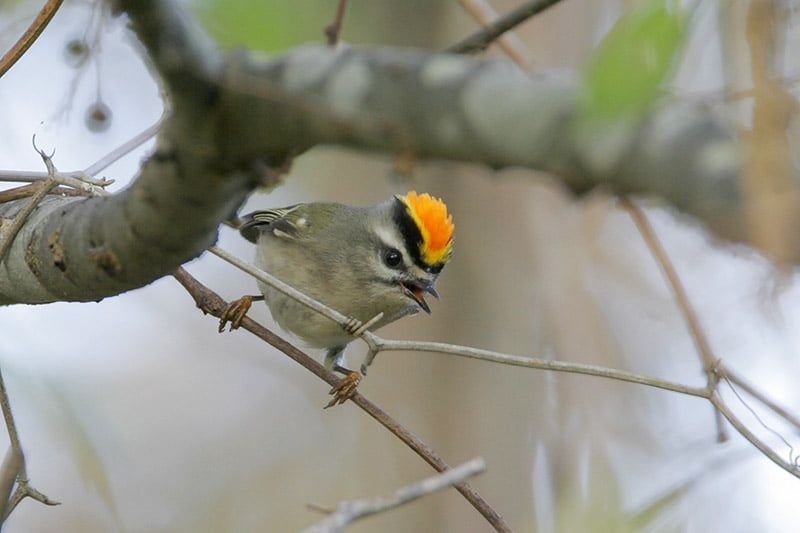
© Greg Lavaty, www.texastargetbirds.com
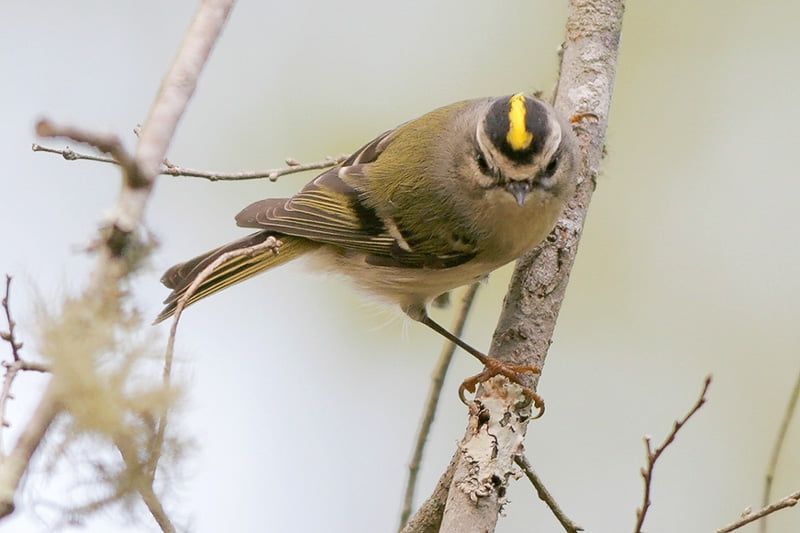
© Greg Lavaty, www.texastargetbirds.com
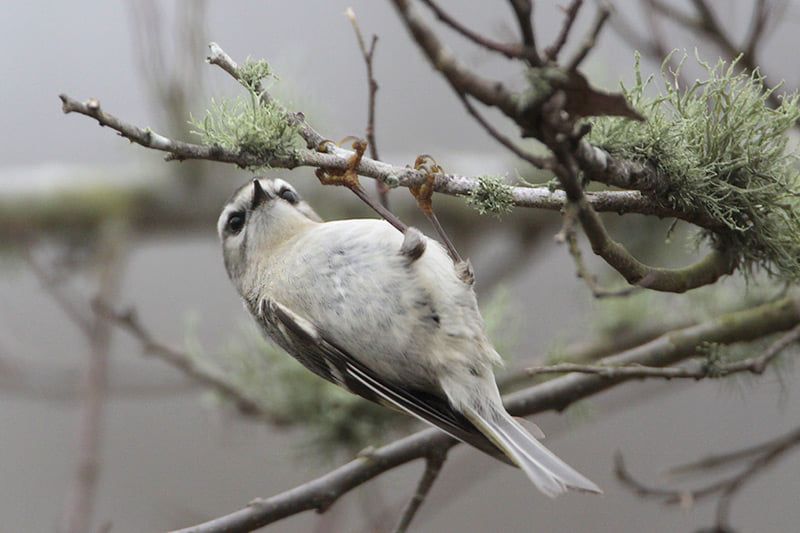
© Greg Lavaty, www.texastargetbirds.com
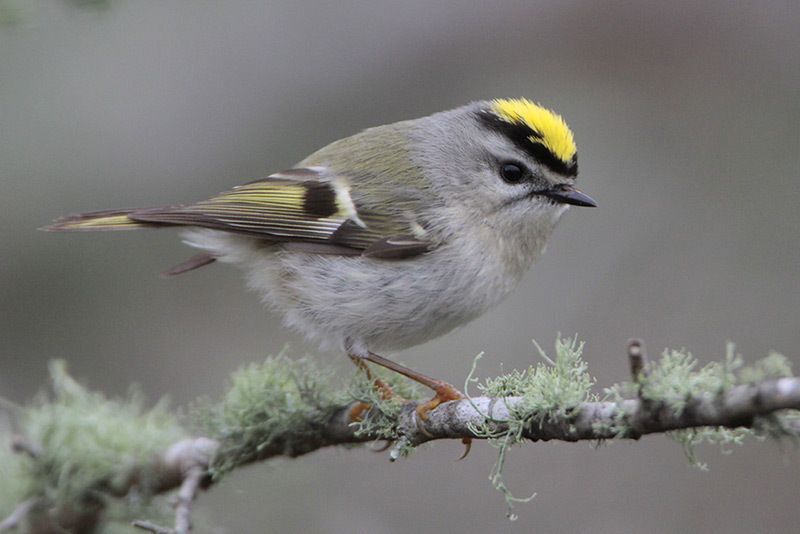
© Greg Lavaty, www.texastargetbirds.com
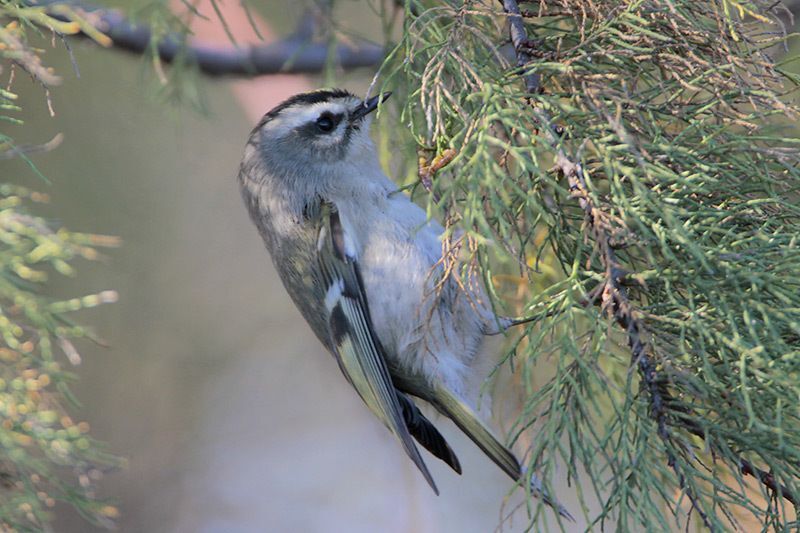
© Greg Lavaty, www.texastargetbirds.com

